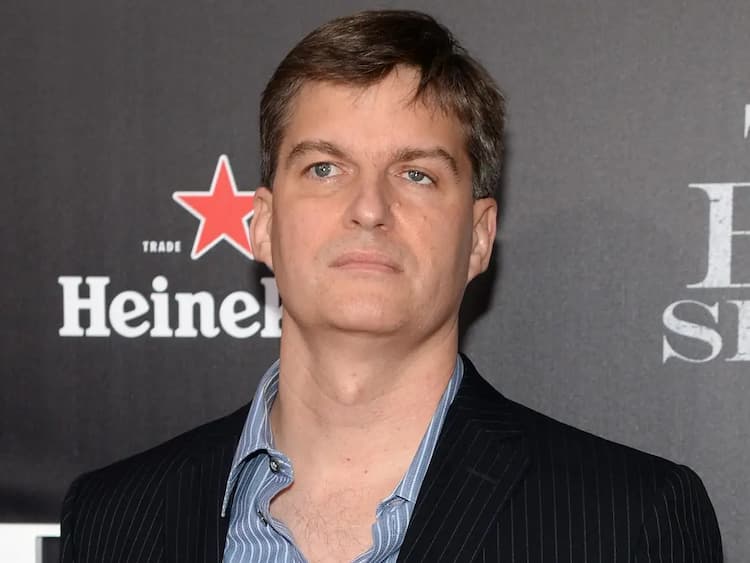Michael Burry Biography
Michael Burry is an investor, hedge fund manager, and physician from the United States. He started and led the hedge fund Scion Capital from 2000 to 2008, before closing it to concentrate on his personal ventures. He is well recognized for being one of the first investors to forecast and profit from the subprime mortgage crisis of 2007–2010.
How old is Michael Burry? – Age
He is 50 years old as of 19 June 2021. He was born in 1971 in San Jose, California, United States.
Michael Burry Education
He went to Santa Teresa High School while he was a teenager. He got an M.D. from Vanderbilt University School of Medicine and began but did not complete his pathology residency at Stanford University Medical Center after studying economics and pre-med at the University of California, Los Angeles. He worked on his interest in financial investment while off duty at night. Despite the fact that he is no longer practicing medicine, Burry has kept his medical license active with the Medical Board of California, which includes continuing education obligations.
Is Michael Burry still married? – Wife
Burry currently resides in Saratoga, California, with his wife and children. Burry believes he has Asperger syndrome after reading about the illness. His son was diagnosed with Asperger syndrome.
How much is Michael Burry? – Net Worth
He has an estimated net worth of $300 million. He achieved a personal profit of $100 million and a profit of more than $700 million for his remaining investors.
How Michael Burry make money? – Investments
Burry worked as a neurology resident at Stanford Hospital and subsequently as a pathology resident at Stanford Hospital after graduating from medical school. After that, he went on to create his own hedge fund. He had previously established a name as an investor by proving a success in value investing, which he discussed on the Silicon Investor message boards beginning in 1996. His stock recommendations were so effective that he drew the attention of corporations like Vanguard and White Mountains Insurance Group, as well as notable investors like Joel Greenblatt. Burry has a very traditional view of what is valuable.
“All my stock selecting is 100 percent predicated on the concept of a margin of safety,” he has declared on several occasions, referring to Benjamin Graham and David Dodd’s 1934 book Security Analysis.

Burry founded Scion Capital, a hedge fund, with the help of an inheritance and family debts, after shutting down his website in November 2000. He called it after one of his favorite novels, Terry Brooks’ The Scions of Shannara (1990). For his investors, he immediately made tremendous gains. “In his first full year, 2001, the S&P 500 plummeted 11.88 percent,” writes author Michael Lewis. Scion’s stock was up 55%. At the pinnacle of the internet bubble, Burry was able to earn these profits by shorting expensive tech equities.
The S&P 500 lost 22.1 percent the next year, while Scion rose 16 percent. The stock market finally turned around the next year, rising 28.69 percent, but Burry outperformed it by 50 percent. He was managing $600 million at the end of 2004 and turning money down.”
Burry began focusing on the subprime market in 2005. He correctly anticipated the real estate bubble will burst in 2007 based on his examination of mortgage lending patterns in 2003 and 2004. His research into residential real estate values convinced him that subprime mortgages, particularly those with “teaser” rates, and the bonds backed by these mortgages, would begin to lose value as soon as the original rates were replaced by much higher rates, which could happen as soon as two years after initiation. As a result of this determination, he decided to short the market by convincing Goldman Sachs and other financial firms to sell him credit default swaps against subprime loans that he believed were vulnerable.
Burry faced an investor revolt during his payments for the credit default swaps, with some investors in his fund claiming his projections were wrong and demanding their money back. Burry’s judgment eventually proved correct: he made a personal profit of $100 million and a profit of more than $700 million for his surviving investors. Between November 1, 2000 and June 2008, Scion Capital earned a total return of 489.34 percent (net of fees and expenditures). Over the same time period, the S&P 500, usually regarded as the benchmark for the US market, returned little under 3%, including dividends.
Burry liquidated his credit default swap short bets by April 2008, according to his website, and did not gain from the 2008 and 2009 bailouts. He then sold his company to concentrate on his personal investments. Burry stated in a New York Times op-ed on April 3, 2010 that anyone who closely researched the financial markets in 2003, 2004 and 2005 might have detected the mounting risk in the subprime markets. He chastised federal authorities for ignoring warnings from outside a small group of experts.
Burry relaunched his hedge fund in 2013, this time under the name Scion Asset Management, and began submitting reports as an exempt reporting adviser (ERA) active in California and approved by the Securities and Exchange Commission. He’s spent a lot of time and money on water, gold, and farmland investments. He’s stated, “Water that is both fresh and clean cannot be taken for granted. And it isn’t—water is a contentious and political issue.”
With 13Fs filed from the fourth quarter of 2015 to the third quarter of 2016, Glimpses was offered into Scion’s portfolio, as mandated by the SEC when a fund’s assets exceed $100 million. On February 14, 2019, Scion Asset Management filed a new 13F, revealing Burry’s ownership of a number of large-cap stocks and $103,528,000 in 13F assets under management, slightly beyond the reporting requirement. Burry claimed in an email to Bloomberg News in August 2019 that there was a bubble in huge US firm stocks because of the popularity of passive investing, which “has orphaned smaller value-type equities abroad.” Alphabet Inc. ($121 million) and Facebook ($24.4 million) were the fund’s top stakes in 2020.
According to a now-deleted tweet, Burry began shorting Tesla before or around early December 2020, and likely increased his short holdings once Tesla’s market cap topped that of Facebook. Burry warned that Tesla’s stock would crash like the housing bubble, claiming that “my last Big Short got bigger and bigger and BIGGER” and taunting Tesla bulls to “enjoy it while it lasts.” He was alleged to own puts on over 800,000 Tesla shares in May 2021. He announced that he was no longer shorting Tesla’s shares in October 2021, following a 100 percent increase in its valuation. He acknowledged holding puts on the ARKK ETF innovation index managed by Ark Invest for over 31 million dollars in the second quarter of 2021.
